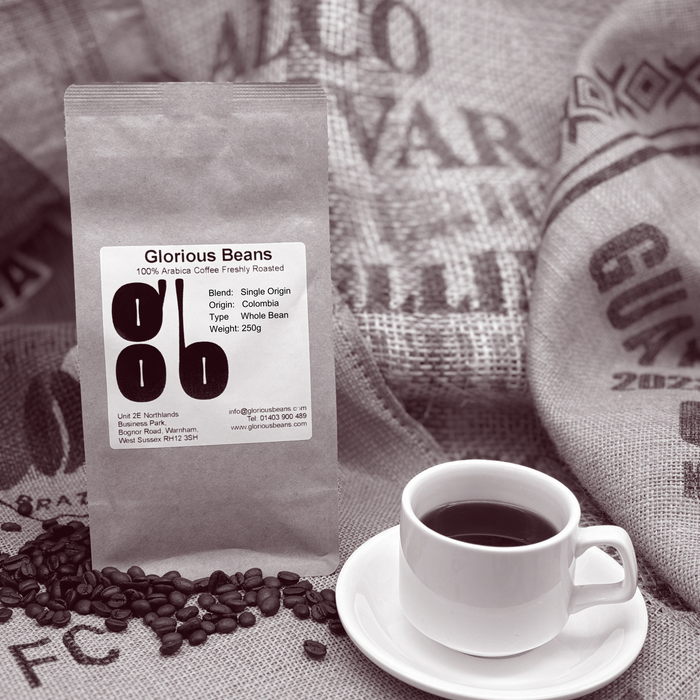Enjoying Food and Desserts with SOE Single Origin Espresso
Enjoying Food and Desserts with SOE Single Origin Espresso
Blog Article
Understanding Coffee Beans: the Trip From Espresso to Blended Coffee Beans

The Beginnings of Coffee: An International Point Of View
While you may consider coffee as a modern-day staple, its origins trace back centuries, linking with cultures across the world. The story starts in Ethiopia, where tale claims a goat herder called Kaldi found the stimulating effects of coffee beans after seeing his goats frolicking energetically after eating them. This triggered passion, bring about coffee's infect Arab investors who cherished the made drink. By the 15th century, it reached Persia, Egypt, and Turkey, where coffee shops became social centers for conversation and society.
As trade courses increased, coffee made its method to Europe in the 17th century, quickly obtaining popularity. It transformed from a mystical beverage right into a daily routine, intellectual exchanges and inspiring celebrations. Each society added its distinct spin to coffee preparation, improving its history. This worldwide trip highlights exactly how coffee links us, transcending borders and uniting diverse traditions via a basic bean.
Cultivation and Harvesting of Coffee Beans
As coffee's journey progressed, the focus moved to the cultivation and harvesting of specific bean varieties, particularly those made use of for espresso. You'll discover that coffee beans usually come from Arabica or Robusta plants, each offering unique flavors. The suitable growing problems include high altitudes and rich, well-drained soil, which boost the beans' top quality.
Throughout the harvest, picking approaches vary. Timing is important; you want to collect when the cherries get to peak perfection for maximum taste.
Once collected, the beans are planned for handling, which is important in identifying their last preference. Comprehending the growing and gathering procedures offers you insight into what goes right into your favored coffee, enhancing your gratitude for each and every mug.
Handling Techniques: From Cherry to Bean
Currently that you have actually found out about collecting espresso beans, let's explore exactly how those cherries change into the coffee beans you enjoy. You'll see just how different harvesting methods effect taste, adhered to by the vital steps of fermentation and drying out. We'll break down the milling and grading procedure that identifies your coffee's high quality.
Harvesting Strategies Explained
When it comes to coffee, comprehending harvesting strategies is crucial, considering that they directly affect the taste and high quality of the beans you take pleasure in. Careful selecting entails hand-picking just ripe cherries, guaranteeing you obtain the best high quality beans. Eventually, the selection of collecting strategy can considerably influence your coffee experience, so it's worth understanding how those beans made it to your mug.
Fermentation and Drying Out
After collecting, the next action in processing coffee beans play a significant duty fit their taste. You'll discover that fermentation is important, as it aids damage down the mucilage surrounding the beans, boosting their taste account. Depending upon the technique, this process can last from a couple of hours to a number of days, with varying outcomes based on temperature level and moisture.
Once fermentation is full, drying follows, which is just as essential. You can select from mechanical or sun-drying drying methods. Sun-drying permits the beans to absorb tastes from the environment, while mechanical drying out assurances consistent wetness levels no matter weather. Correct drying is important to prevent mold and mildew and preserve the beans' high quality, ultimately affecting your cup of coffee.
Milling and Grading Process
As fermentation and drying set the stage for flavor development, the milling and grading process guarantees that only the best coffee beans make it to your cup. This stage involves removing the outer layers of the coffee cherry, including the parchment and husk. Premium beans get a higher grade, resulting in a richer coffee experience.
Roasting Methods: Opening Taste Prospective
When you roast coffee beans, the technique you pick can drastically affect the flavor profile. Comprehending the partnership in between time, temperature, and roasting methods is crucial to disclosing the potential of your mixture. Let's check out exactly how these aspects integrated to produce the excellent mug.
Roasting Techniques Explained
While you could believe that all coffee roasting techniques produce the exact same outcomes, the truth is that each technique discloses one-of-a-kind taste capacities in the beans. Drum roasting uses a revolving drum to uniformly disperse heat, boosting caramelization and producing a balanced taste. Air roasting, on the other hand, distributes warm air around the beans, promoting a lighter roast with noticable level of acidity.

Effect on Taste Profile
Various roasting methods not just affect the procedure yet additionally greatly affect the flavor account of the coffee beans. Dark roasts, on the various other hand, bring out vibrant, great smoky tastes, sometimes covering up the bean's one-of-a-kind qualities. Comprehending these nuances aids you value the creativity behind your cup of coffee, boosting your total experience with every sip.
Time and Temperature Level Elements
To release the complete taste possibility of coffee beans, both time and temperature throughout the roasting procedure play considerable duties. When roasting, you'll find that higher temperatures can promptly establish flavors, yet if you rush it, you may wind up with scorched notes. On the other hand, reduced temperature levels permit a much more gradual taste growth, showcasing the beans' unique features.

Timing is equally as important; extending the roast as well long can bring about a loss of level of acidity and illumination, while as well brief a roast may leave the beans underdeveloped. Locating that sweet area calls for method and testing. By adjusting these elements, you can disclose the abundant, complex tastes hidden within each bean, creating a really impressive coffee experience.
The Art of Blending: Crafting One-of-a-kind Coffee Profiles

Begin by picking a base coffee that supplies a strong structure. Then, pick complementary beans to improve certain taste notes. For circumstances, a brilliant Ethiopian bean can bring fruitiness, while an abundant Brazilian coffee adds body. Trial and error is crucial-- don't hesitate to adjust ratios up until you discover your optimal profile.
As you blend, remember that each mix tells a tale. You're not simply making coffee; you're producing an experience. Take your time, preference often, and take pleasure in the trip of finding your trademark blend - Single Origin Espresso.
Developing Approaches: Just How Prep Work Influences Taste
Blending coffee opens the original source up a domain name of flavor opportunities, yet just how you make that mix can significantly influence your final mug. On the various other hand, a pour-over highlights the coffee's clearness and brightness, best for showcasing delicate notes.
Coffee, with its high pressure, produces a concentrated shot that emphasizes sweetness and crema. If you like a lighter brew, think about a chilly brew technique; it generates a smooth, less acidic preference.
Adjusting variables like water temperature level, grind dimension, and brew time can transform your coffee's account. Welcome the art of brewing to uncover the tastes concealed in your coffee blends.
The Future of Coffee: Sustainability and Advancement
As the coffee market develops, sustainability and advancement are ending up being published here necessary for attending to environmental obstacles and meeting customer demands. You'll observe that more coffee business are taking on environment-friendly methods, from sourcing beans ethically to executing sustainable farming strategies. These shifts not just aid the planet yet also improve the quality of the coffee you enjoy.
You might see developments like eco-friendly packaging and water-saving brewing approaches that lower waste. Advanced innovation, such as blockchain, is likewise becoming popular, guaranteeing openness in the supply chain, which allows you to trace your coffee back to its beginnings.
In addition, investing in local neighborhoods and supporting farmers through reasonable profession efforts promotes a more lasting coffee ecological community. As you sip your next mug, bear in mind that your selections can add to a brighter future for coffee. By deciding for sustainable brands, you're not simply taking pleasure in a beverage; you're making a favorable effect on the world.
Often Asked Inquiries
What Is the Difference In Between Arabica and Robusta Beans?
Arabica beans are smoother, sweeter, and have a greater acidity, while robusta beans are stronger, much more bitter, and include even more high levels of caffeine. You'll discover these differences in taste and aroma when making your coffee.
Just How Does Altitude Affect Coffee Bean Taste?
Altitude impacts coffee bean taste considerably. Higher altitudes generate beans with brighter level of acidity and facility flavors, while lower altitudes frequently produce beans that are larger and less nuanced. You'll observe these distinctions in your cup!
What Are the Health And Wellness Perks of Drinking Coffee?
Drinking coffee can enhance your energy, boost mental emphasis, and also boost physical performance. It's rich in antioxidants, might decrease the threat of particular conditions, and can promote a healthier metabolic process when eaten in moderation.
Can Coffee Beans Be Recycled for Developing?
Yes, you can recycle coffee beans for brewing, but the taste may be weak. If you appreciate more experimenting, attempt recycling them in various means, like cold brews or contributing to healthy smoothies for an additional kick.
Just how Should I Store Coffee Beans for Quality?
To maintain your coffee beans fresh, store them in a closed container in an awesome, dark area. Prevent exposing them to wetness, warm, or light, as these elements can swiftly degrade their flavor and scent.
Comprehending Coffee Beans: the Trip From Espresso to Blended Coffee Beans.
Now that you've learned regarding collecting coffee beans, let's explore exactly how those cherries transform into the coffee beans you enjoy.When you roast coffee beans, the method you pick can drastically influence the flavor profile - Single Origin Espresso.While you may think that all coffee toasting methods yield the same results, the truth is that each method discloses distinct taste potentials in the beans.Various roasting approaches not only influence the process yet additionally significantly affect the taste profile of the coffee beans
Report this page